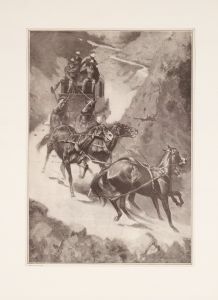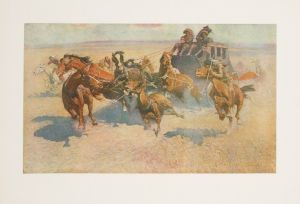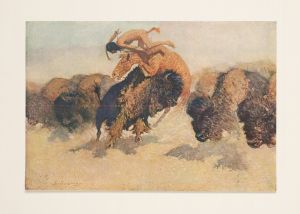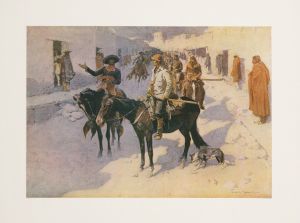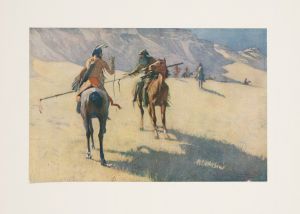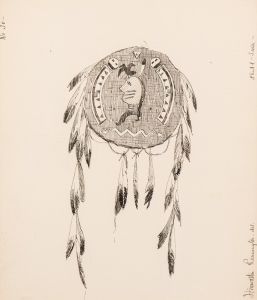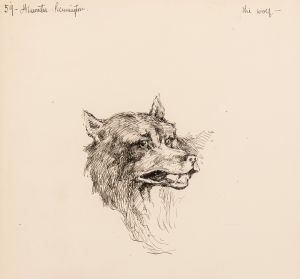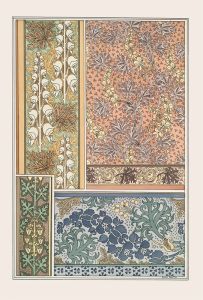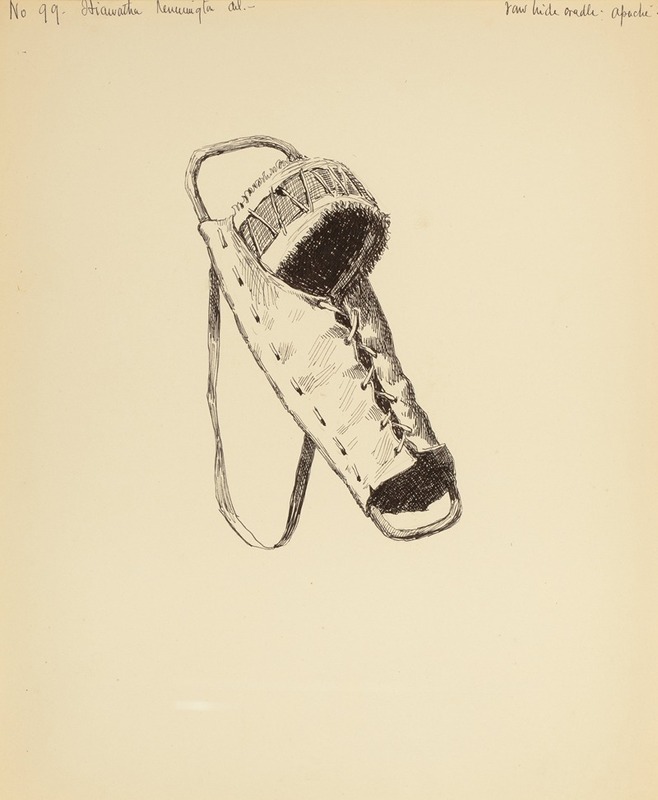
Rawhide Cradle, Apache, illustration from The Song of Hiawatha
A hand-painted replica of Frederic Remington’s masterpiece Rawhide Cradle, Apache, illustration from The Song of Hiawatha, meticulously crafted by professional artists to capture the true essence of the original. Each piece is created with museum-quality canvas and rare mineral pigments, carefully painted by experienced artists with delicate brushstrokes and rich, layered colors to perfectly recreate the texture of the original artwork. Unlike machine-printed reproductions, this hand-painted version brings the painting to life, infused with the artist’s emotions and skill in every stroke. Whether for personal collection or home decoration, it instantly elevates the artistic atmosphere of any space.
Frederic Remington, an American artist renowned for his depictions of the American West, created the illustration titled Rawhide Cradle, Apache as part of his work for Henry Wadsworth Longfellow's epic poem The Song of Hiawatha. This particular illustration is one of many that Remington produced during his career, showcasing his skill in portraying Native American life, culture, and the landscapes of the western United States.
The artwork depicts an Apache cradleboard, a traditional baby carrier used by many Native American tribes, including the Apache. Cradleboards were typically crafted from materials such as wood, rawhide, and cloth, and were designed to securely hold an infant while allowing the caregiver freedom of movement. In this illustration, Remington captures the intricate details of the rawhide cradle, emphasizing its craftsmanship and cultural significance. The Apache people, known for their resourcefulness and adaptability, often decorated their cradleboards with symbolic patterns and designs, reflecting their artistic traditions and spiritual beliefs.
Frederic Remington's illustrations for The Song of Hiawatha were commissioned in the late 19th century, during a period when interest in Native American cultures was growing among the American public. While Longfellow's poem itself is not directly related to the Apache people—it is based on Ojibwe and other Great Lakes tribes—Remington's choice to include imagery from various Native American groups reflects the broader fascination with Indigenous cultures at the time. However, it is important to note that such representations were often filtered through the perspective of non-Native artists and audiences, which could result in generalized or romanticized portrayals.
Remington's work is characterized by his attention to detail and his ability to convey a sense of movement and life. His illustrations often served as a visual record of the rapidly changing American frontier during the late 19th and early 20th centuries. While his depictions of Native Americans and their customs are valuable for their artistic merit, they should also be viewed critically, as they were created within the context of a society that often misunderstood or misrepresented Indigenous cultures.
Today, Rawhide Cradle, Apache and other works by Frederic Remington are studied as part of the broader history of American art and its relationship to the portrayal of Native American peoples. The illustration provides insight into both the cultural practices of the Apache and the artistic trends of Remington's era, making it a significant piece for understanding the intersection of art, history, and cultural representation.






